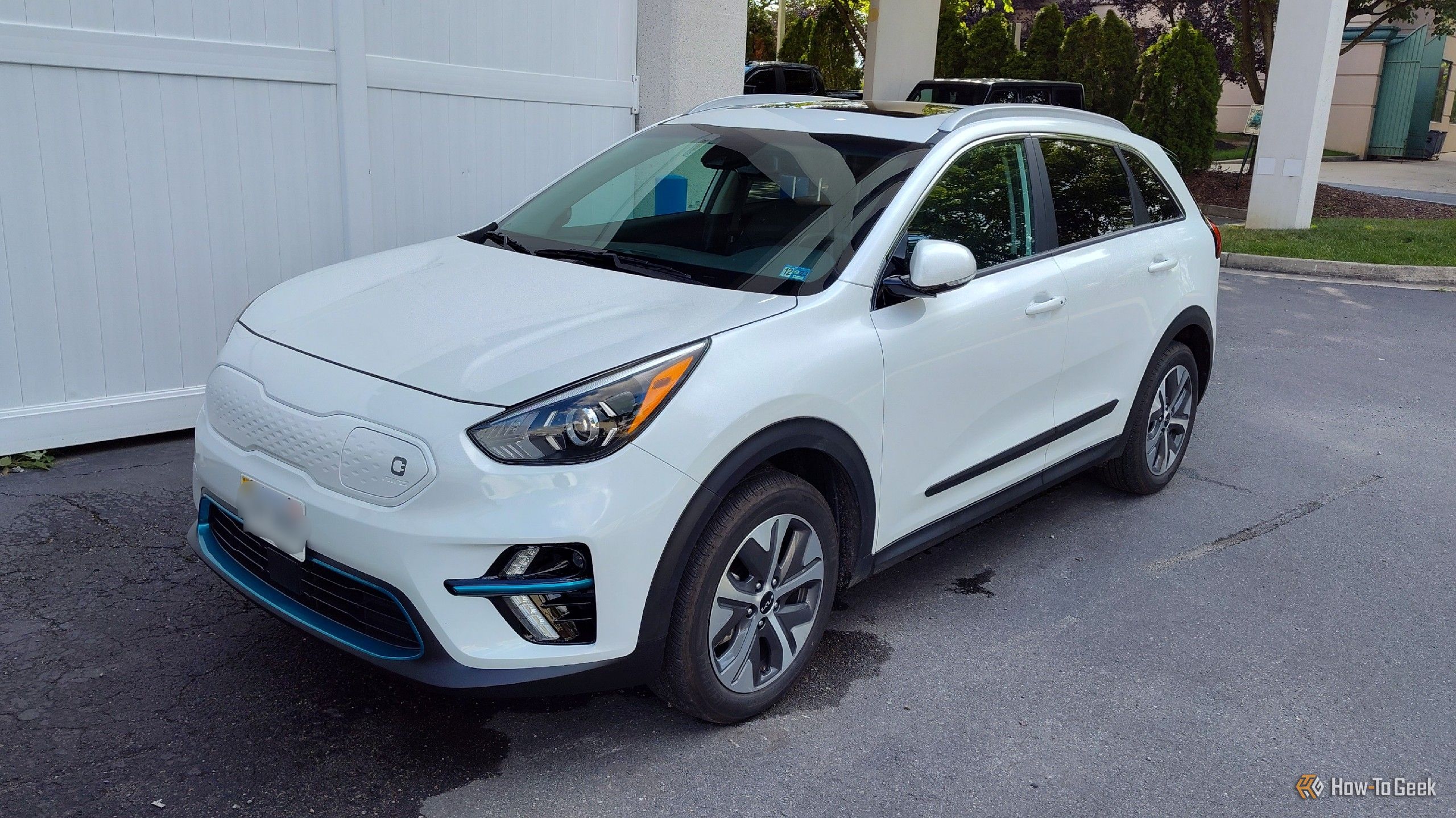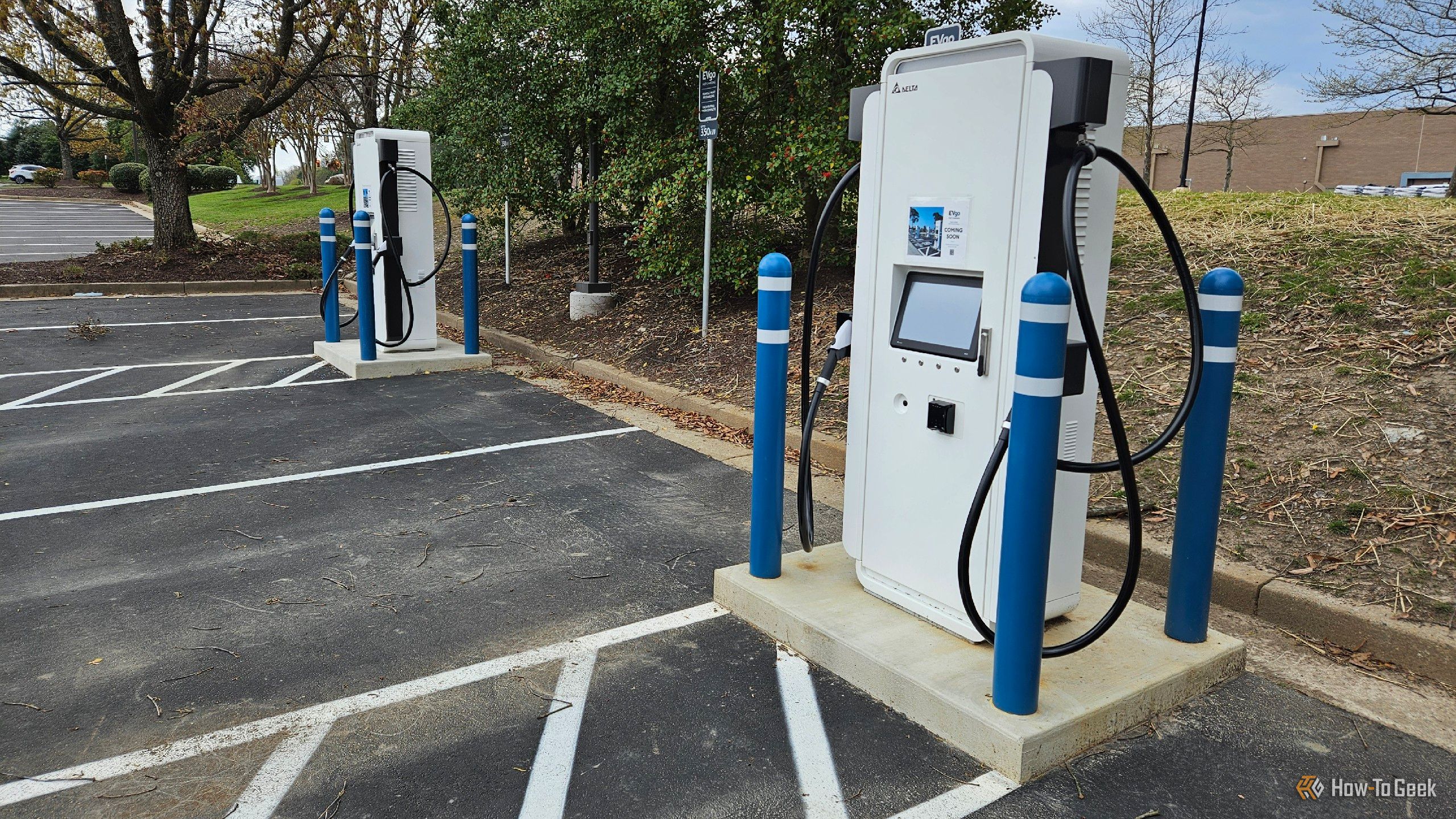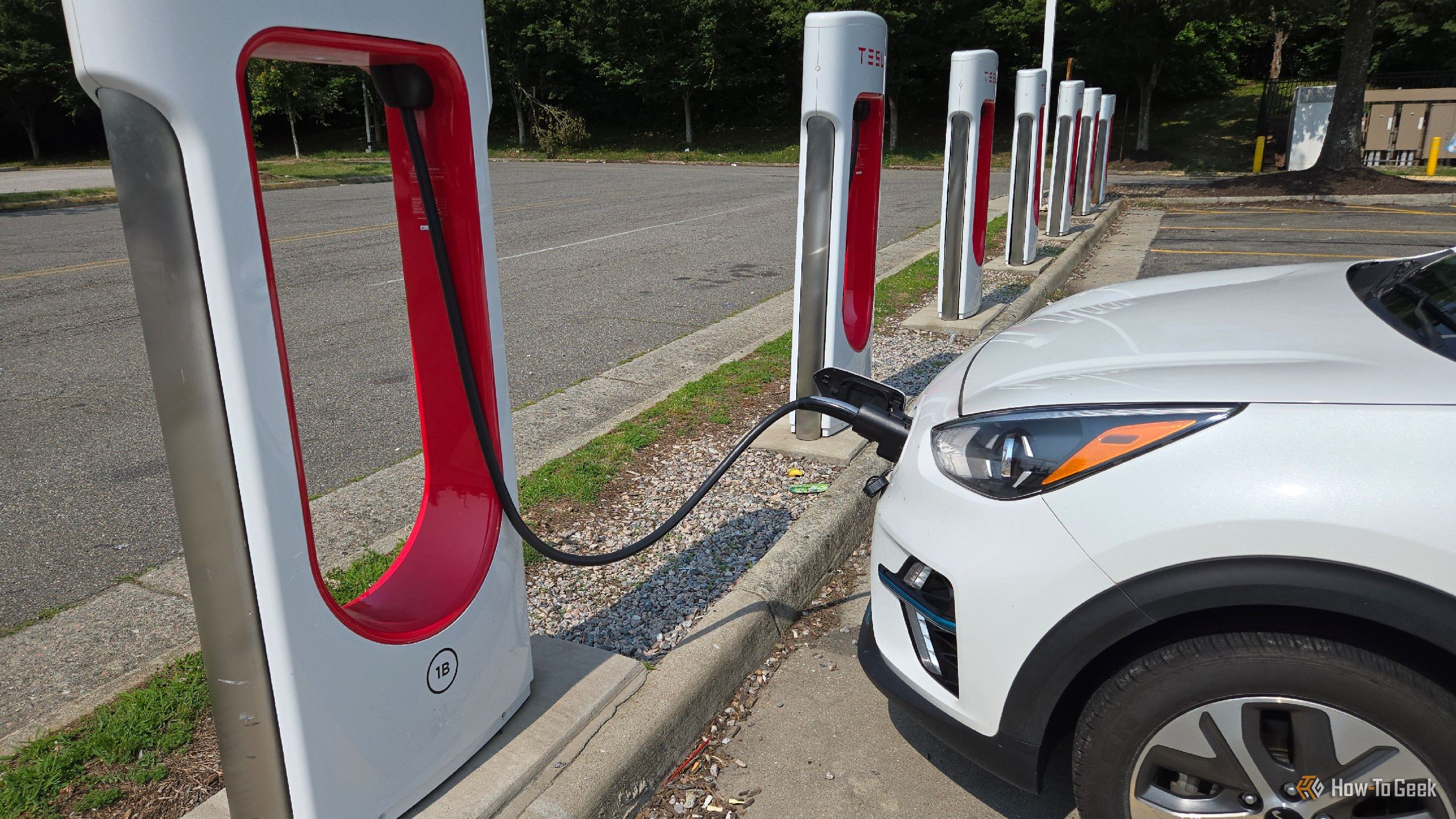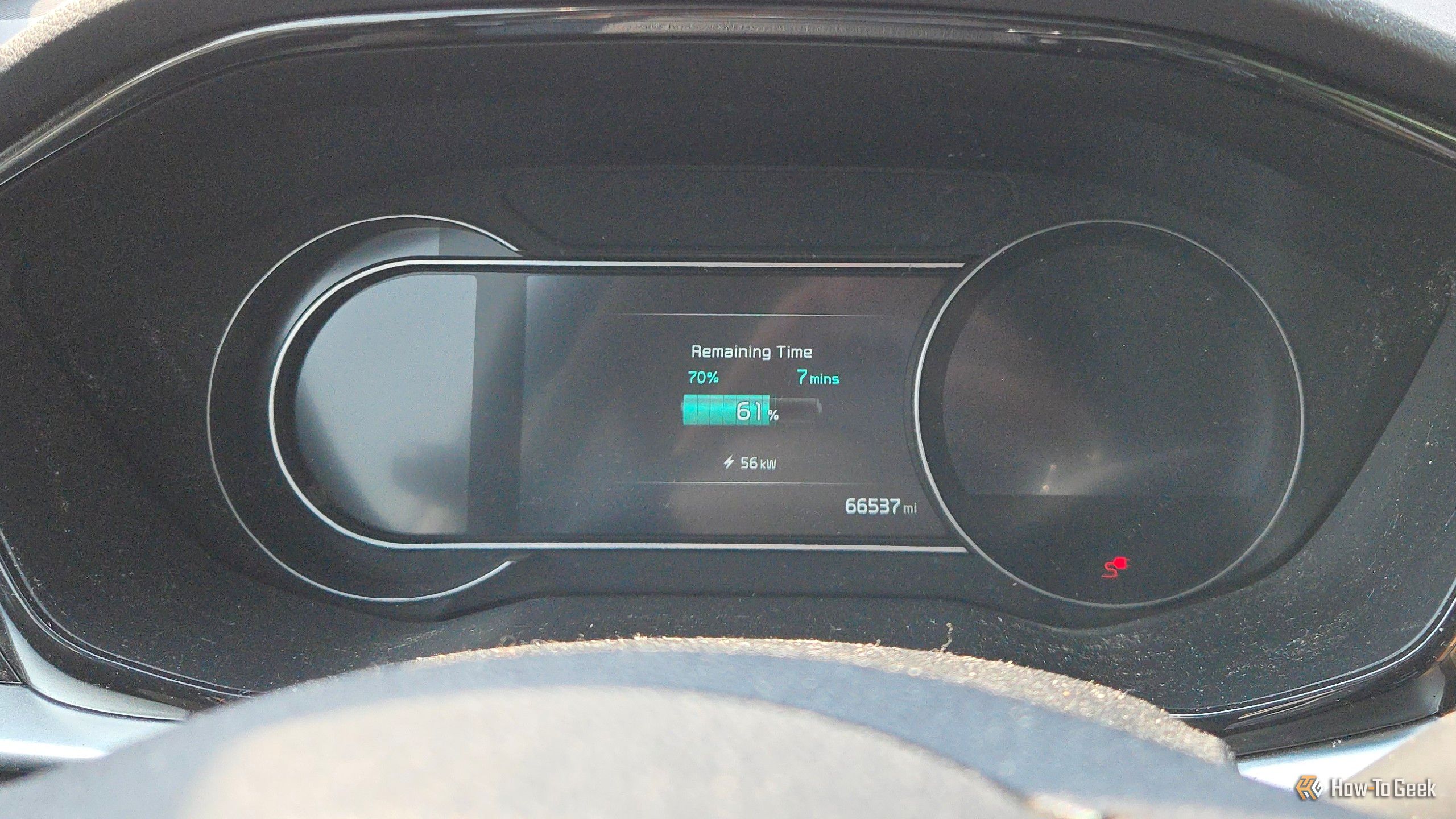I’ve been driving electric cars since 2018, and at long last, I no longer have to drive past Tesla Superchargers when I need a charge. Now that I have bought a Supercharger adapter from Kia, I see little reason to buy a new EV any time soon.
I Drive a First-Gen Kia Niro EV
I bought my current car at the end of 2021. It’s a 2022 Kia Niro EV, the last year of a car model originally released in 2018. The second-gen Niro was already announced and would arrive the following year, but I didn’t have the luxury of waiting. We were moving to a new home that my old 2013 Nissan Leaf, with its paltry 60 miles of range, would simply not be able to handle.
That’s not to say that the 2022 Niro EV is the same as the one released in 2018. It has a redesigned dash and a larger display, making the car feel decidedly more modern when you sit inside even though the exterior looks identical, aside from the new Kia badge. I also don’t want to give the impression that I regret this car. I don’t. I absolutely love it.
A Dream Car—Except for This One Thing
This car has been an absolute joy to drive, with physical buttons in all the right places and maintenance consisting solely of new tires, tire rotations, and replaced cabin filters. The all-electric Niro, like its hybrid siblings, is very efficient, easily getting over four miles per kilowatt-hour when I’m not driving it at 70 miles per hour on the interstate by our home. That number creeps closer to five when I drive at sea level.
With this efficiency, my Niro effectively has the same range as my wife’s Volkswagen D4 despite the roughly 20% smaller battery. And considering I charge at home virtually for free thanks to the solar panels on our roof, there isn’t a day when I miss having to regularly stop at gas stations.
But on longer road trips, we eventually need to charge away from home using public DC fast chargers.
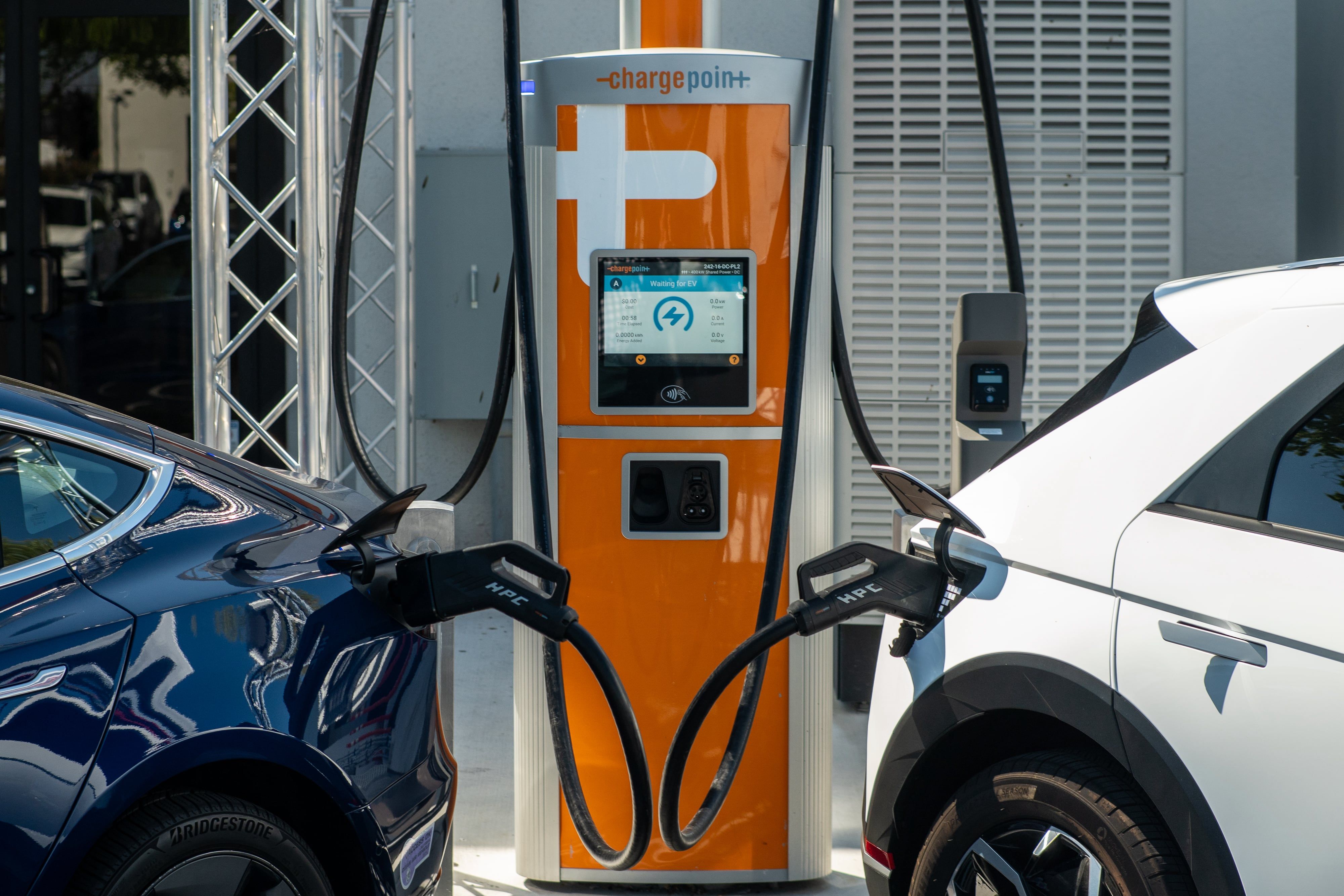
Related
GM and ChargePoint Are Building ‘Hundreds’ More EV Charging Stations
Thanks to a new strategic partnership.
Over the past several years, I’ve watched as the number of CCS charging stations that serve cars like mine has slowly grown while also becoming less reliable, thanks to the infrastructure aging and the strain of having to power a larger number of vehicles.
I’ve still been able to drive wherever I want, but it requires more planning and time. I’ve envied the size of Tesla’s Supercharger network, not enough to want a Tesla, but enough to wish it wasn’t restricted to only one type of car. Thankfully, Tesla is working with automakers to roll out access to ever more cars and trucks.

Related
Volvo and Polestar EVs Can Now Use Tesla’s Superchargers
Be warned, the adapter hardware is expensive.
Supercharger Access Doubles Where I Can Charge
The Tesla Supercharger network is the largest in North America for the time being. I look forward to seeing how big Ionna and Walmart’s networks eventually become, but in the here and now, getting a Tesla Supercharger adapter from Kia has doubled the number of places where I can charge.
And that’s not the full story. It’s not only that there are more Tesla Supercharger locations than locations from competing networks, but that each one tends to have more stalls, and those stalls reliably work. No matter which direction I travel in from my home in Virginia, seeing Superchargers on the map reduces what remaining stress I had of finding places to charge on road trips.
Charging Speed Is Now Less of an Issue
My car’s weakest link is DC fast charging. Its charging speed is what I consider the slowest time that’s still viable for road trips. The 45 minutes my car takes to get to 80% from 10% is slower than the half-hour that the ID4 and newer cars can do, but it’s not nearly as leisurely as the 1 hour and 15 minutes that the Chevy Bolt requires.
If I set my sights on a 70% state of charge instead, I can get back on the road in a half hour as well. The challenge is having enough places to stop to compensate for the 25 fewer miles of range. That’s where Supercharger access comes in.
With CCS and Supercharger stations combined, I can reliably expect to see chargers available at least every 50 miles throughout the region of the country I drive through. I can hit the road with 180 miles of range at 70%, drive for a couple of hours, and skip a few stations knowing that one will be nearby when my charge gets low. It’s faster to charge quickly more often than to charge for longer in hopes of maximizing my range.
There Are Also Adapters for Tesla Destination Chargers
Superchargers aren’t the only Tesla chargers that have been off limits to me. There are Tesla Destination Chargers that charge at the same slower speed as an at-home charger but are commonplace at some hotels. Adapters like the TeslaTap open these up to other EVs as well. I haven’t bought one of these yet, even though they have been around for years. Once I do, I’ll be able to charge at virtually any charging station.
Is living the dongle life ideal for a car? No. But considering how rarely I need public charging, it’s a genuinely tiny inconvenience—and it’s a problem that’s already in the process of going away now that the industry has settled on a single charging plug, the North American Charging Standard (otherwise known as the Tesla plug), going forward.
I love my car, and I’m happy to see I’ll be able to drive it long distance for many years to come. A Kia Niro EV may not be the most exciting EV for car nerds, but it’s a reliable set of wheels that is almost maintenance-free, sometimes free to fuel, and very easy to repair. Having a Tesla Supercharger adapter is icing on the cake.

